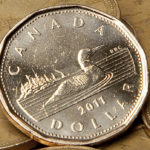 Gold traded little changed amid speculations that better-than-expected US data may prompt the Federal Reserve to taper stimulus, while a weaker dollar limited losses. Assets in the SPDR Gold Trust, the biggest bullion-backed ETF, were reduced by 3 tons to touch the lowest since January 2009, adding to bearish sentiment.
Gold traded little changed amid speculations that better-than-expected US data may prompt the Federal Reserve to taper stimulus, while a weaker dollar limited losses. Assets in the SPDR Gold Trust, the biggest bullion-backed ETF, were reduced by 3 tons to touch the lowest since January 2009, adding to bearish sentiment.
On the Comex division of the New York Mercantile Exchange, gold futures for settlement in February were mostly unchanged at $ 1 229.30 per troy ounce at 09:13 GMT after swinging between day’s high and low of $1 231.70 and $1 224.80 an ounce respectively. Prices touched $1 211.10 per troy ounce on December 4th, the lowest since July 5th to close the week 1.8% lower. Last month, gold plunged 5.5 percent, the most since June and the biggest drop in November since 1978.
The precious metal has fallen 27% so far this year and is heading for the first annual drop in 13 years as investors lost faith in the metal as a store of value amid a rally in U.S. equities to a record and muted inflation.
According to data by the US Commodity Futures Trading Commission, money managers net-long positions in gold fell 16 percent to 26 774 futures and options in the week ended December 3rd, the lowest since June 2007, while short bets rose 6.2 percent to 79 631, within 0.6 percent of the record reached in July.
James Steel, an analyst at HSBC Securities (USA) Inc. in New York, said, cited by Bloomberg: “Gold has been dragged lower, for the bulk of this year, on the uncertainty over a possible Fed tapering, forward guidance on QE ’tapering’ would remove this uncertainty and provide some relief for the bullion markets.”
Fed stimulus outlook
The yellow metal was pressured on Friday following overall upbeat data from the U.S. which fueled speculations for an earlier-than-expected Fed stimulus tapering.
On Friday, the Labor Department reported that unemployment in the U.S. fell to 7.0% in November, the lowest in five years, beating projections for a minor decline to 7.2% from October’s 7.3%.
U.S. employers added more jobs last month than projected. Non-farm payrolls jumped to 203 000, confounding expectations for a retreat to 183 000 from October’s downward revised 200 000. The progress in the labor market will probably provide a spark for the US economy, analysts expected.
The recovering labor market led to improving sentiment and higher spending, despite a 0.1% decline in household income. Household spending, which accounts for 70% of the economy, rose by 0.3% in October, beating both projections and last month’s increase of 0.2%.
US average hourly earnings increased to 0.2% in November from the previous month to reach $24.15, a 2% yearly increase. Average weekly hours for all workers also increased, from 34.4 in October to 34.5 in November.
Core personal consumption expenditures (PCE) met analysts projections on both monthly and annual basis, jumping by 0.1% and 1.1% in October, respectively.
The FOMC’s October meeting minutes pointed that Federal Reserve officials may reduce their $85 billion in monthly bond purchases “in coming months” as the economy improves. Central bankers are set to reconvene on December 17-18th.
The market may be underestimating the probability “of a vote to taper” this month, and the dollar may have begun a multi-year bull market, Credit Suisse Group AG wrote in a December 4th report, cited by Bloomberg.
Last month, a survey by the same media revealed that the Fed will probably trim its asset purchases to $70 billion from $85 billion at its March 18-19th meeting.
Fed Reserve Bank of Atlanta President Dennis Lockhart said that any decision to taper should be accompanied by a limit on the size of the program or a timetable for ending it.
A weaker dollar eased some pressure on the metal. The U.S. dollar index, which measures the greenback’s performance against a basket of six major peers, fell 0.06% to 80.22 by 09:07 GMT. The December contract held in a day’s range between 80.33 and a five-week low of 80.21. The U.S dollar index settled last week 0.52% lower after falling by 0.23% in the preceding two weeks. Weakening of the dollar makes commodities priced in it cheaper for foreign currency holders and boosts their appeal as an alternative investment.
Assets in the SPDR Gold Trust, the biggest bullion-backed ETF, were reduced at 835.71 tons on Friday, the lowest since January 2009. Outflows have totaled nearly 470 tons this year. Billionaire hedge-fund manager John Paulson who holds the biggest stake in the SPDR Gold Trust told clients on November 20 that he wouldn’t invest more money in his gold fund because it isn’t clear when inflation will accelerate. US inflation is still well below the Fed target of 2.00%.





